Header Image from National Park Service.gov Devils’ Tower National Monument, Wyoming
Wyoming became the 44th state on July 10, 1890.
Meadowlark
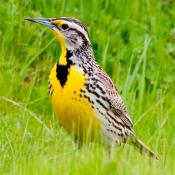
The western meadowlark is a member of the blackbird family. A male usually has two mates at the same time. The females do all the incubation and brooding, and most of the feeding of the young.
The male meadow lark uses visual display behaviors to attract a mate. When he finds a female that he wants to mate with, he points his bill in the air, puffs out his yellow throat and flaps his wings above his head. If that doesn’t get the female’s attention, he hops up and down. The western meadowlark builds its nest on the ground. The female finds a depression in the ground and shapes it by digging in the dirt with her bill. She lines the depression with soft grass and makes a roof by pulling grass and plants over the depression. She then weaves in grass to make a waterproof dome, leaving enough space for an opening. The female lays between three and seven eggs. It takes about 12 days for the eggs to hatch. The meadowlark usually has two broods a year. The male protects the nest by noisily chasing intruders away.
A male’s home range is usually about six or seven acres. If another male invades his territory, he may get into a fight with the intruder. Fighting meadowlarks lock their feet together and peck at each other with their beaks.
State bird of Kansas, Oregon, Nebraska, Wyoming, North Dakota, and Montana
Flower: Indian Paintbrush
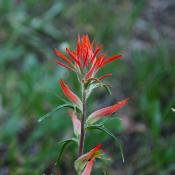
The flowers of Indian paintbrush are edible, and were consumed in moderation by various Native American tribes as a condiment with other fresh greens. Indian paintbrush has similar health benefits to consuming garlic if only the flowers are eaten in small amounts and in moderation
The First Indian Paintbrush
Once upon a time, a Blackfoot maiden fell in love with a wounded prisoner she was attending. The maiden realized that her tribe was only nursing its captive in order to torture him later. She planned an escape of the prisoner, accompanying him for fear of the punishment for such a deed.
After some time in her lover’s camp she grew homesick for a glimpse of her old camp. She finally went to the site of her old camp, hid in the nearby bushes, and overheard two young braves discussing what would happen to the maiden who betrayed them, if only they could find her.
Knowing she could never return, but nonetheless longing to return, she took a piece of bark and drew a picture of the camp upon it with her own blood, gashing her leg and painting with a stick.
After drawing the picture, the maiden threw the stick away and returned to her lover’s camp. Where the stick landed, a little plant grew with a bush-like end, dyed with the blood of this girl, which became the first Indian Paintbrush.
Adapted from “Old Man’s Garden” by Annora Brown
Owlcation.com
How the Indian Paintbrush was named.
The name of this flower is based on the legend of an Indian who wanted to paint a sunset. Frustrated that he could not produce any of the colors that matched the beauty of a sunset, he asked the Great Spirit for help. The Great Spirit provided him with paintbrushes to create his painting. After completing his work, the artist then discarded his used paintbrushes around the landscape. These paint bushes later blossomed into plants. Another similar Native American legend also involves an artist whose discarded paint brushes became flowers.
exploretexas.blog
Tree: Plains Cottonwood
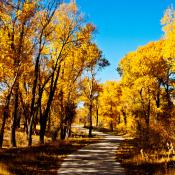
The Plains Cottonwood is a large, fast-growing, short-lived tree of the Great Plains and eastern border of the Rocky Mountains. Members of the willow family, cottonwoods are named for the cotton-like mass of hairs surrounding their seeds. They are related to poplars and aspens.
The plains cottonwood has been very useful to man. The wood is light weight and easy to handle. It was used as a construction material and burned for heat by American Indians and American pioneers. Due to its abundance, lumber from it was used to build barns and houses. During the winter of 1804 the Indians taught Lewis and Clark how to make canoes by hollowing out large trunks of plains cottonwoods. The bark, twigs, young branches and saplings were also used as forage for horses. The inner bark contains salicin and can be used as an anti-rheumatic drug, disinfectant and antiseptic. Its pulp is used to make paper products and wood for making light furniture and pallets. Plains cottonwoods are used in shelterbelts and wildlife plantings. Hollow trees make ideal den sites for wildlife. Young trees, young branches and twigs are used for food by deer, mice, beaver and grouse.
Farm Forum.net
State Quarter
From theus50.com
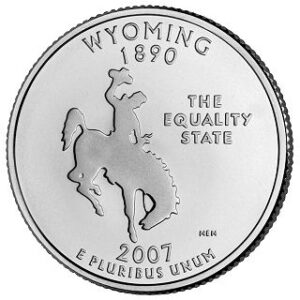
Wyoming, nicknamed the “Equality State,” was admitted into the Union on July 10, 1890, becoming our Nation’s 44th state. The reverse of Wyoming’s quarter features a bucking horse and rider with the inscriptions “The Equality State,” “Wyoming” and “1890.”
The bucking horse and rider symbolize Wyoming’s Wild West heritage. “Buffalo Bill” Cody personified this in his traveling Wild West show. First settled by fur trappers, Fort Laramie, Wyoming, later became a popular destination for pioneers traveling the Oregon Trail.
Wyoming was nicknamed the “Equality State” because of its historical role in establishing equal voting rights for women. Wyoming was the first territory to grant “female suffrage” and became the first state in the Nation to allow women to vote, serve on juries and hold public office. In 1924, Nellie Tayloe Ross became the first woman elected Governor of Wyoming. In 1933, Ross became the first woman appointed as the Director of the United States Mint.
Capital: Cheyenne
Nickname: Equality State/Cowboy State
Motto: Equal rights
Wyoming Facts and Trivia
Throughout the 1700s and early 1800s various countries laid claim to the land including Spain, France, Great Britain, Mexico, and the United States. However, few Europeans ventured in the territory and it was still largely ruled by the Native American tribes.
In 1803, the United States purchased the Louisiana Territory from France. A large part of Wyoming was included in the land.
The first white man to enter Wyoming was explorer John Colter in 1807. He was a member of the Lewis and Clark expedition who went off from the main expedition to explore on his own. He discovered the great geysers of Yellowstone and became famous with his stories of the region. The land became known as Colter’s Hell because of the steam and heat that came from the ground.
In the next few years to come, fur traders and trappers came to Wyoming hoping to find new areas to trap valuable furs that could be sold for clothing.
The first permanent settlement in Wyoming was Fort Laramie which was established in 1834. In the mid-1800s people began to travel through Wyoming on their way west along the Oregon Trail. Trading posts and small towns grew up along the trail. Several hundred thousand people traveled through Wyoming between 1840 and 1870. The Pony Express also ran through Wyoming in 1860, but it was quickly replaced by the telegraph.
With the arrival of the railroad in the 1860s many more people began to settle the area, but Wyoming was still largely unpopulated and there was little in the way of government or law. It was a part of the Wild West. Famous outlaws like Butch Cassidy hid out in Wyoming towns and robbed trains. Much of the land became cattle ranching land where cowboys lived working the herds.
At the same time, the local Native Americans were not happy with the white man taking over their land. They began to fight back. The Lakota and Cheyenne Indians led by Red Cloud and Crazy Horse organized and fought against the U.S. in Red Cloud’s War. They lost the war and were eventually forced into reservations.
The United States gained the southwest region of Wyoming from Great Britain in 1846 as part of the Oregon Treaty. The land became part of the Wyoming Territory in 1869. In the same year women gained the right to vote in the Wyoming Territory. It is the first U.S. territory or state to grant women suffrage.
1872 – Yellowstone National Park was established by President Ulysses S. Grant. It was the first national park.
Wyoming leads the country in coal production in 1994 with 3 million tons per week.
The JCPenney stores were started in Kemmerer.
The first Dude Ranch in Wyoming was the Eaton Ranch, near Wolf. The Eaton’s also came up with the term “dude”
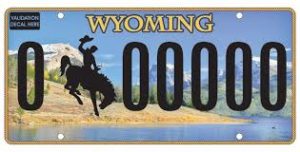 The Horse on the Wyoming license plate has a name, “Old Steamboat”. It is named after a bronc that could not be ridden back in the oughts or the teens.
The Horse on the Wyoming license plate has a name, “Old Steamboat”. It is named after a bronc that could not be ridden back in the oughts or the teens.
Wyoming has the lowest population of all 50 United States.
Cody Wyoming is named after William “Buffalo Bill” Cody.
The Red Desert in south central Wyoming drains neither to the east nor to the west. The continental divide splits and goes around the desert on all sides leaving the basin without normal drainage.
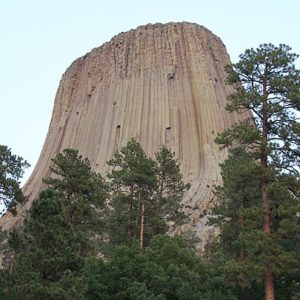 Devils Tower was the first United States National Monument, established on September 24, 1906, by President Theodore Roosevelt.
Devils Tower was the first United States National Monument, established on September 24, 1906, by President Theodore Roosevelt.
The Wind River actually changes its name in the middle of the stream becoming the Big Horn River at a site at the north end of the Wind River Canyon, where each year the Native Americans hold a ceremony depicting the “Wedding of the Waters.”
The western two-thirds of the state is covered mostly by the mountain ranges and rangelands of the Rocky Mountains, while the eastern third of the state is high elevation prairie called the High Plains. Almost half of the land in Wyoming is owned by the U.S. government.
Wyoming has been a politically conservative state since the 1950s, with the Republican Party candidate winning every presidential election except that of 1964.
A Democrat has not represented Wyoming in the Senate since 1977 or in the House since 1978. Donald Trump won elections in Wyoming with 67.4% of the vote in 2016 and 69.9% in 2020.
Strange Laws
Using a firearm to fish is strictly forbidden.
Skiing under the influence of alcohol is prohibited.
It is illegal to wear a hat that obstructs people’s view in a public theater or place of amusement.
Junk dealers may not make any business transactions with drunk persons.
If one is drunk in a mine, he or she could land in jail for up to a year.
All new buildings that cost over $100,000 to build must have 1% of funds spent on artwork for the building.
Any person who fails to close a fence is subject to a fine of up to seven hundred and fifty dollars.
People:
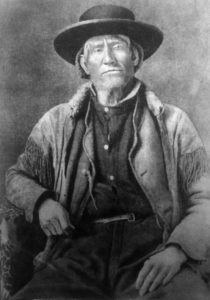 James Bridger, trapper, guide and storyteller
James Bridger, trapper, guide and storyteller Lynne Cheney, author, wife of Dick Cheney
Lynne Cheney, author, wife of Dick Cheney- John Colter, trader
- Thomas Fitzpatrick mountain man and guide
- Curt Gowdy sportscaster, Green River
- Jackson Pollock, painter
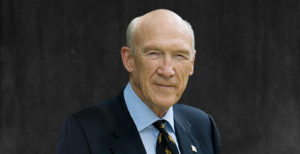 Alan K. Simpson senator
Alan K. Simpson senator
Credits
See ducksters.com
See 50 states.com
See kingfm.com
